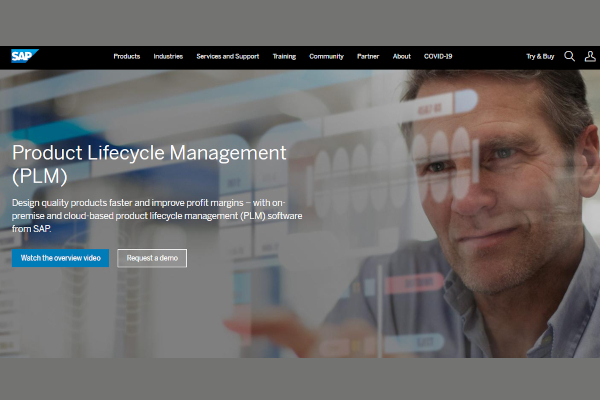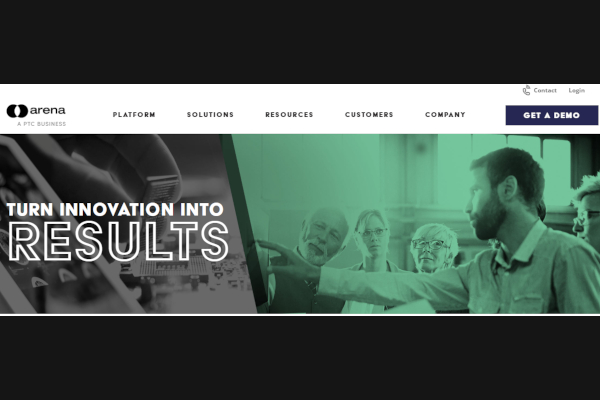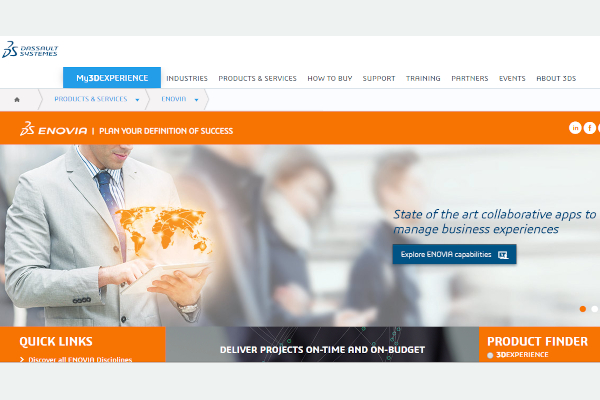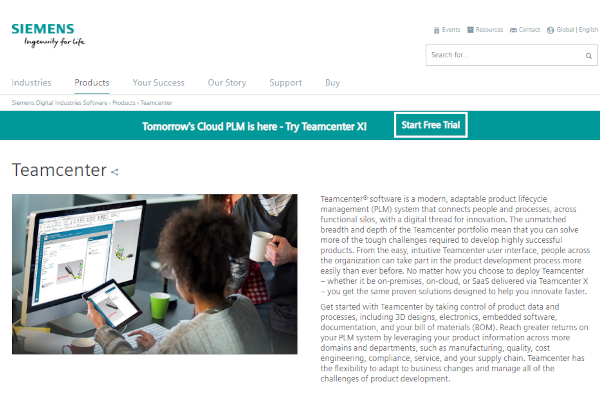Product lifecycle management is a concept that encompasses all data related to the design, manufacture, support, and eventual disposal of manufactured things. Product lifecycle management brings together the various organizations, departments, and people engaged in the product’s creation to simplify their activities. The ultimate goal of delivering a product that outperforms its competitors is highly lucrative and lasts as long as consumer demand and technology will allow.
12+ Product Lifecycle Management Software
1. Upchain PLM
2. SAP PLM
3. Autodesk PLM
4. Siemens Teamcenter PLM
5. PTC Creo PLM
6. Oracle Agile PLM
7. Arena PLM
8. PTC Windchill
9. Propel
10. SOLIDWORKS
11. Enovia
12. TeamCenter Siemens
13. Aras Corp
What Is a Product Lifecycle Management Software?
Product Lifecycle Management Software is a software solution that handles all of the data and activities at each stage of a product’s lifecycle across global supply networks. Items, parts, goods, papers, specifications, engineering change orders, and quality workflows contribute to this. Because it provides the digital basis and enterprise product record for holistic project management and supply chain strategy, modern PLM software is increasingly becoming the lynchpin of corporate transformation. This will help you generate faster innovations and enhance how products are designed, manufactured, maintained, and serviced.
Benefits
Product lifecycle management has numerous advantages, including bringing a higher-quality product to market faster, improving product safety, boosting revenue prospects, and minimizing errors and waste. Other advantages include:
- Product design and dependability have improved
- Prototyping costs are lower
- Requests for quotes that are more accurate and timely
Features
Product lifecycle management software unifies all of the organization mentioned above and preparedness technologies into a single platform for managing and connecting data visualization, processes, and business systems with the people who use them. PLM software, when utilized appropriately, may boost innovation, increase productivity tracking, speed up product development, and cut down on resource and time waste. Here are a few of its features:
- Real-time resolution of complicated challenges
- Organize engineering problems
- Link the customer and the product
- Sales performance and marketing data can help you improve the viability of your product
- Improve products by incorporating feedback from sales and service
Top 10 Product Lifecycle Management Software
1. Upchain PLM
Upchain is a cloud PLM software provider based in Canada specializing in product development and management for automotive, aerospace, and textiles. They achieved an 89% rating and raised $7.4 million in funding with 250 employees.
2. SAP PLM
SAP is a software and services company that helps companies manage their operations, customer relations, and other related functions. SAP’s headquarters are in Walldorf, Baden-Württemberg, and the company has $50.4 billion in revenue and 84,183 workers.
3. Autodesk PLM
Autodesk creates software for the engineering and entertainment industries that allows users to design and construct models. With $3.8 billion in revenue and 9,000 employees, they got an 83% rating.
4. Siemens Teamcenter PLM
The headquarters of Siemens Government Technologies, Inc. is in Reston, Virginia. It has a revenue of $20.7 million and a 75% employee rating.
5. PTC Creo PLM
PTC creates 2D and 3D database design as well as solutions for product lifecycle management and service management. They have a $1.6 billion revenue, 6,055 employees, and a 61% customer satisfaction rating.
6. Oracle Agile PLM
Oracle is a computer technology specializing in providing organizations with IT infrastructure, business analytics, server, and storage technologies. They have a total revenue of $39.7 billion, 136,000 employees, and a 73% customer experience rating.
7. Arena PLM
Arena PLM is a sports event service company that rents scaffolding, seating, fencing, barriers, a bar, and catering to sporting events. With $213.4 million in revenue and 1,224 employees, they have an 87% rating.
8. PTC Windchill
PTC creates 2D and 3D design tools as well as solutions for product lifecycle management and service management. With a total of 6,055 people, the company generates $1.6 billion in annual revenue.
9. Propel
Propel creates, manufactures, and sells orthodontic medical products. The headquarters of Propel Orthodontics, LLC are in Ossining, New York. With 100 staff and an 83% rating, the expected revenue is $25 million.
10. SOLIDWORKS
SolidWorks creates and develops 3D software that allows users to design, simulate, publish, and manage data. They generate $100-500 million in annual revenue and employ between 250 and 500 people.
FAQs
What is a decline in the life cycle of a product?
The decline stage of a product’s life cycle is the final step, during which sales diminish, and production eventually ceases. Profitability will erode over time until production becomes unprofitable, at which point manufacturing will stop.
What’s the difference between a product’s life cycle and the life cycle of an industry?
The term “life-cycle” is an apt description of what products and businesses go through overtime. The life cycle and industry life cycle, when applied to companies, include the four stages of introduction, growth, maturity, and decline.
What is the life cycle of a business?
The business life cycle is the movement of a company through several stages throughout time. It is usually classified into five stages: launch, growth, shake-out, maturity, and decline. The cycle is depicted on a graph with time on the horizontal axis and dollars or other financial parameters on the vertical axis.
From concept to customer service, successful product lifecycle management ensures that high-quality, cost-effective goods are produced without budget tracking or design failures. Managing the product lifecycle can be difficult; therefore, selecting the right managers and employing the correct tools will help prevent PLM failure.
Related Posts
10+ Best Chemical Software for Windows, Mac, Android 2022
12+ Best Vulnerability Scanner Software for Windows, Mac, Android 2022
4+ Best Bundled Pay Management Software for Windows, Mac, Android 2022
10+ Best Trust Accounting Software for Windows, Mac, Android 2022
10+ Best Patient Portal Software for Windows, Mac, Android 2022
13+ Best Virtual Reality (VR) Software for Windows, Mac, Android 2022
12+ Best Bed and Breakfast Software for Windows, Mac, Android 2022
15+ Best Resort Management Software for Windows, Mac, Android 2022
14+ Best Hotel Channel Management Software for Windows, Mac, Android 2022
12+ Best Social Media Monitoring Software for Windows, Mac, Android 2022
10+ Best Transport Management Software for Windows, Mac, Android 2022
10+ Best Other Marketing Software for Windows, Mac, Android 2022
10+ Best Top Sales Enablement Software for Windows, Mac, Android 2022
8+ Best Industry Business Intelligence Software for Windows, Mac, Android 2022
10+ Best Insurance Agency Software for Windows, Mac, Android 2022













